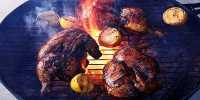Contrary to expectations and Star Wars propaganda, an army of clones may not be a particularly effective fighting force. In order to create something that works most effectively together for war or peace, it is better to create it from elements that are separated from each other than to be separated from each other.
The evidence is a physical one, but it may have applications from renewable energy to biology. We naturally assume that the more similar items the more they will work the same way. However, science is about dispelling all assumptions. Four years ago, Dr. Takashi Nishikawa and Professor Adilson Motor published an article arguing that not only do differences in the components of a system interfere with behaviors, but they are also sometimes essential.
These sound like abstract mathematics that only connects to reality, but in natural physics, Nishikawa, motor, and so on. Dr. Ferenc Molnar has shown their response that they need to “identify the interacting entity in situations as non-identical behavior” in the real world.
From examples like heart cells and pedestrian reading, we know that in the right situation, things can naturally adjust to different rhythms. Even physicists hoped that the similarities between the elements would help this process (for example, if walkers would normally move at the same speed). Molnar created a set of electric-powered pendulums that could be held together and applied friction as a damp force. In some experiments, all three oscillators were matched. In others, the friction applied to each varied, friction was applied to each variant. Identical objects will behave identically when separate, but this can go out the window once they start to interact, with feedback between them inducing changes. Hard as it is to visualize, the three found the output frequencies matched best when the oscillators experienced different, but not too different, dampening, As Motter noted in a statement.
Nishikawa said, “It’s mathematically remarkable, physically alone. So, many colleagues thought it was impossible to demonstrate this effect experimentally.” Not as relevant as it may seem in the real world, the authors argue: “The results presented here will naturally extend to real systems with protected node parameters such as logic gate networks, neuronal systems, connected lasers and mechanical, electrical networks and chemical pendulums.”
The authors are already trying to use their work to improve the durability of wind and solar power-dependent grids. However, its effects extend far more. Fish and birds work together to protect themselves from predators, and male Asian fireflies are most attractive to their peers when their flashing time with each other. This finding raises the possibility that the synthesis of animals may be most effective when there are variations between them that require alignment, a potentially important lesson if we try to replicate or combine these systems.
















